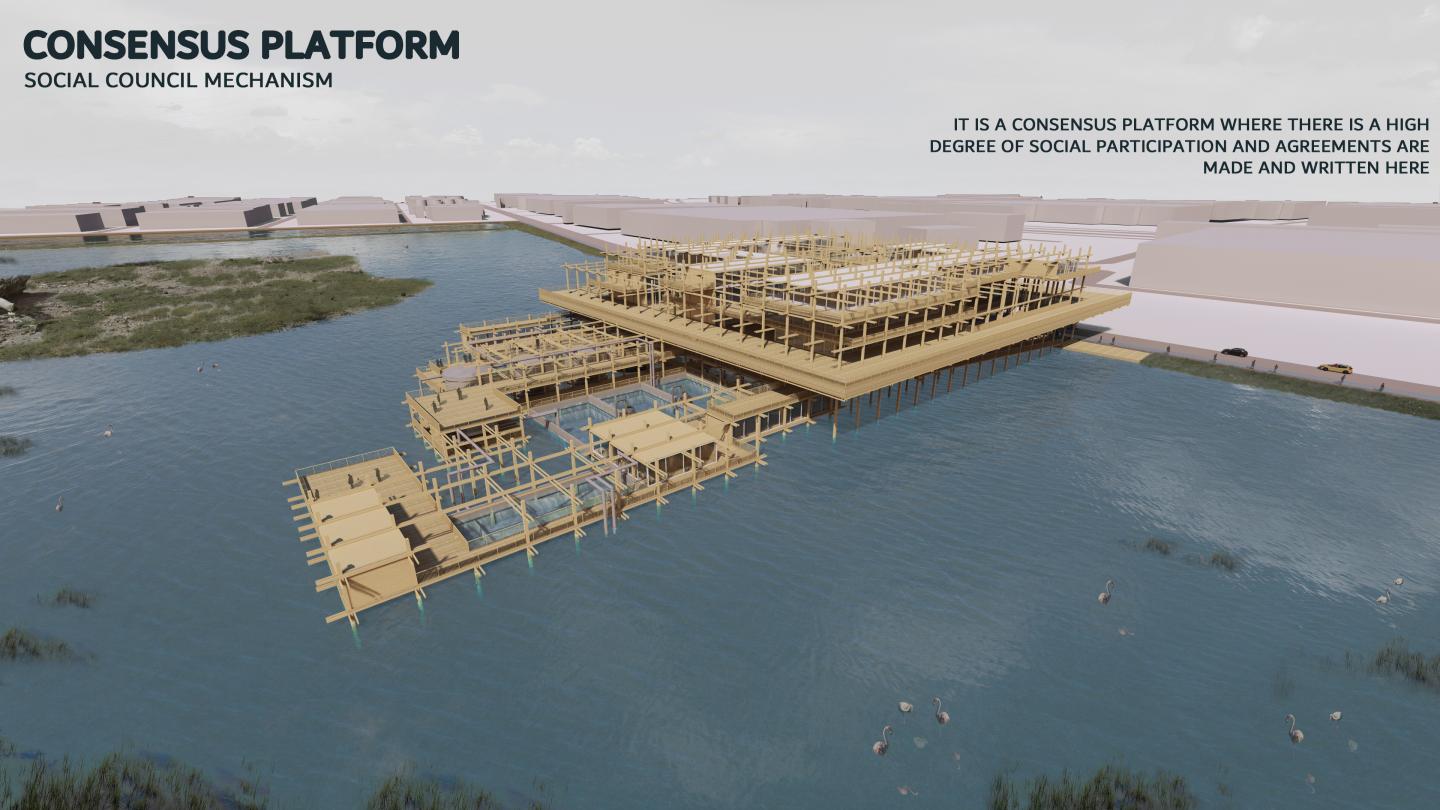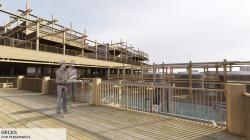The project initially poses the question, "What is Earth?" and then shapes itself in response to the response. Leapold asserts that the earth is a living system and a source of energy that moves through a cycle made up of plants, animals, and soil. As therefore, humans and all other ecosystems are valued. In this context, earth is not only a physical entity but also a concept that includes an ethical and moral dimension.
Ethics typically entails considering what it means to be human and attempting to do what is decent and moral. Over time, ethics has expanded to include everything around us. One of the growing stages of ethics, land ethics, according to Leopold, is an ethical philosophy that promotes giving up the idea that humans should dominate nature and living in harmony with it. This understanding foresees that humans should act not only for their own interests but also by considering the rights of all living things. It therefore seeks to impose consciousness and responsibility on humans. It promotes the idea that the rights of all organisms within an environment ought to be upheld.
One of the most crucial phases in a society's ethical evolution is land ethics. This stage seeks to shift humankind from its position as the earth community's conquerors to that of a simple member of a community made up of interdependent parts, an ecological citizen, and to grant humans consciousness and responsibility based on the protection of other species, all while giving humans equal value with other species. The utilitarian view of land should be rejected, the anthropocentric way of life should be given up, and the rights of ecosystems and the people who depend on them should be upheld in order for ethics to advance to this point in its development.
The main barrier to the modern implementation of earth ethics is the persistence of anthropocentric thought. People believe they have no obligation to nature or other living things because they perceive them as beings that serve them. Because of this, there are ever-increasing human-induced pressures on nature that lead to both major issues and a disruption of the ecological equilibrium. These issues include industrialization, environmental contamination, fast population increase, and rapid resource use. Many live species' habitats have been devastated by environmental issues such air, water, and soil pollution, upsetting ecosystem balance and raising fears that this would have a detrimental impact on future generations' quality of life.
We see the best example of this in Sasalı Wetland. We see the best example of this in Sasalı. In this region with a wetland, there are living creatures living on the edge of the water, and yet there is an organized industrial zone consisting mostly of chemical plants in the immediate vicinity, so the vegetation here is damaged, the water is polluted and the life of living beings is threatened. Therefore, this situation is actually part of the ethical problem. Because it participates in actions that may negatively impact the ecology, it is regarded to be unethical activity.
It is observed that the existing legal frameworks are not sufficient to protect this region and that we cannot solve these problems as a moral and cultural issue on their own. Therefore, we need to have a set of ethical rules and agreements that are created by the society itself within the framework of social consensus and that operate with its own mechanism. Because if it continues like this, it will be inevitable for all areas to be damaged.
PROJECT
In this context, I propose a consensus platform where there is a high level of social participation within the framework of an educational model, where ethical rules are determined by the society, where agreements are made and written for the solution of these rules and problems. Therefore, I want to create a social assembly mechanism that operates its control mechanism by ensuring the social ethical values agreement at the city scale. In this platform, what can be done to protect this place outside of legal frameworks will be discussed intensively by the public, activists, journalists, researchers and industrial operators, agreement texts regarding the compensation of the damage will be prepared and announced, scientific data supporting the agreement will be researched and published, and collective studies will be carried out.
The main goal of the platform is to ensure that this agreement made here is announced to the whole city first, then to the country and finally to the world with a participatory approach. The compliance with the agreement will be ensured by constantly monitoring and observing the people here. In other words, on this platform, the society will call on itself to comply with this system of rules. Therefore, this platform will demand that these problems gradually disappear on their own through a consensus basis, while also increasing awareness.
At the same time, one of the main goals of the Platform is to rehabilitate the water in the polluted wetland and return it to the ecosystem.
2024
The project is located in Izmir. It is located in the Sasalı wetland area, which is located on the shores of the protected Gediz Delatsı and has an industrial zone around it. This area is home to many species, especially flamingos. The area is accessible due to the proximity of many vehicle roads and bicycle routes. The design area is approximately 10,000 square meters.
In terms of spatial organization, it consists of 4 basic groups:
1) DATA CAPSULES: (Scientific Research And Evaluation Points That Will Form The Foundations Of Consensus)
Here are the places that ensure that the consensus is based on a scientific basis. These places are at ground level and 4.5 level.
2) WRITING AGREEMENT SPACES: (Places That Will Form The Consensus Formation Process)
These are the places that form the steps of writing the agreement with the public assembly formed by the people. They are at the platform level and 12.5 level.
3) AGREEMENT SPREAD AREAS: (Places That Provide The Dissemination And Announcement Of Consensus On The Road To Consensus)
These are the places that work to ensure that the rules of this collectively created collective agreement are constantly kept in memory and that this is constantly on the agenda in daily life. They are at the platform level, 12.5 level and 16.5 level.
4) OBSERVATION AREA (Observation Area As A Control Mechanism Specifically For Sasalı With The Framework Of The Consensus Provided)
These are places created to face the results of the rules of the agreement made, to show the results in order to check whether this agreement is followed or not. It is at 16.5 level.
Under the platform (on the ground floor) there is a "Purification System" that allows the water in the polluted wetland to be treated and released back into the wetland. This purification system includes purification pools that go through various stages and this system uses the reverse osmosis method.
Designer: Melis Özdemir
Instructor: Assoc. Prof. Dr. Ülkü İnceköse, Assoc. Prof. Dr. Ebru Yılmaz, R.A. Ceren Ergüler
Favorited 2 times





















